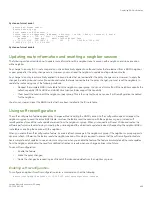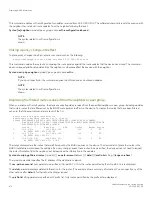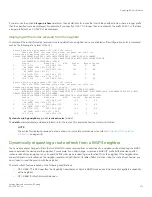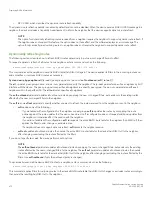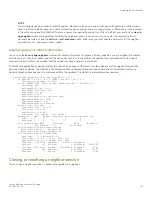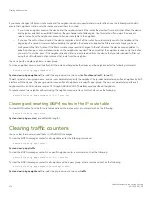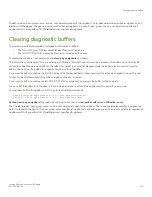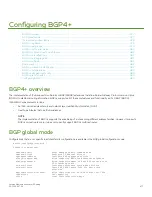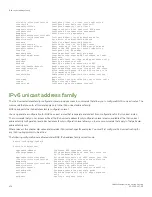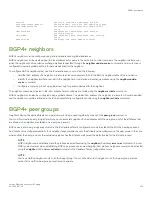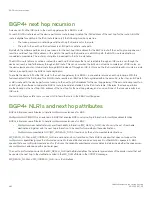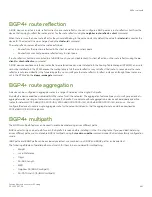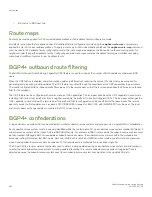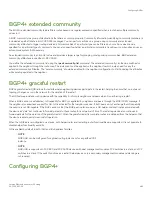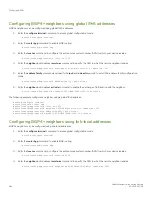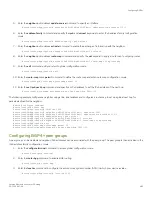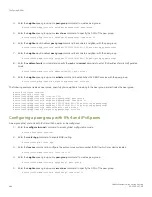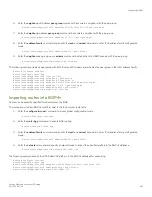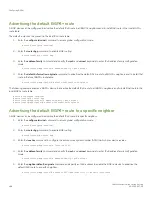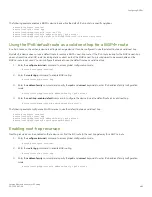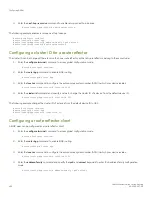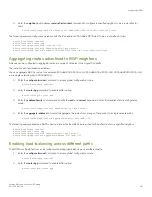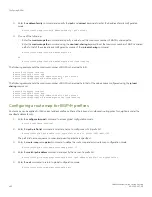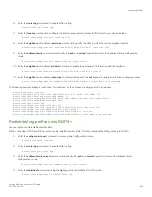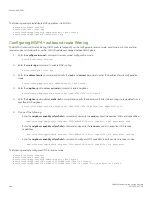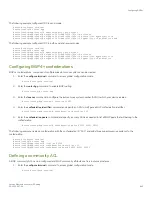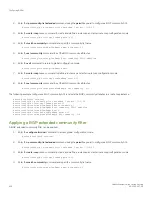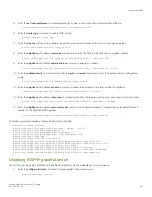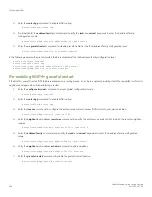
BGP4+ extended community
The BGP4+ extended community feature filters routes based on a regular expression specified when a route has multiple community
values in it.
A BGP community is a group of destinations that share a common property. Community information identifying community members is
included as a path attribute in BGP UPDATE messages. You can perform actions on a group using community and extended
community attributes to trigger routing decisions. All communities of a particular type can be filtered out, or certain values can be
specified for a particular type of community. You can also specify whether a particular community is transitive or non-transitive across an
autonomous system (AS) boundary.
An extended community is an 8-octet value and provides a larger range for grouping or categorizing communities. BGP extended
community attributes are specified in RFC 4360.
You define the extended community list using the
ip extcommunity-list
command. The extended community can then be matched or
applied to the neighbor through the route map. The route map must be applied on the neighbor to which routes need to carry the
extended community attributes. The "send-community" should be enabled for the neighbor configuration to start including the attributes
while sending updates to the neighbor.
BGP4+ graceful restart
BGP4+ graceful restart (GR) allows for restarts where neighboring devices participate in the restart, helping to ensure that no route and
topology changes occur in the network for the duration of the restart.
The GR feature provides a routing device with the capability to inform its neighbors and peers when it is performing a restart.
When a BGP session is established, GR capability for BGP is negotiated by neighbors and peers through the BGP OPEN message. If
the neighbor also advertises support for GR, GR is activated for that neighbor session. If both peers do not exchange the GR capability,
the session is not GR-capable. If the BGP session is lost, the BGP peer router, known as a GR helper, marks all routes associated with
the device as “stale” but continues to forward packets to these routes for a set period of time. The restarting device also continues to
forward packets for the duration of the graceful restart. When the graceful restart is complete, routes are obtained from the helper so that
the device is able to quickly resume full operation.
When the GR feature is configured on a device, both helper router and restarting router functionalities are supported. It is not possible to
disable helper functionality explicitly.
GR is enabled by default in both IPv4 and IPv6 address families.
NOTE
BGP4 GR can be configured for a global routing instance or for a specified VRF
instance.
NOTE
BGP4 GR is supported in FSX 800 and FSX 1600 devices with dual management modules, FCX switches in a stack, and ICX
switches in a stack. If the switch functions as a restart helper device only, a secondary management module and stacking are
not required.
Configuring BGP4+
Configuring BGP4+
FastIron Ethernet Switch Layer 3 Routing
53-1003627-04
483
Summary of Contents for FastIron SX 1600
Page 2: ...FastIron Ethernet Switch Layer 3 Routing 2 53 1003627 04 ...
Page 16: ...FastIron Ethernet Switch Layer 3 Routing 16 53 1003627 04 ...
Page 20: ...FastIron Ethernet Switch Layer 3 Routing 20 53 1003627 04 ...
Page 142: ...FastIron Ethernet Switch Layer 3 Routing 142 53 1003627 04 ...
Page 150: ...FastIron Ethernet Switch Layer 3 Routing 150 53 1003627 04 ...
Page 200: ...FastIron Ethernet Switch Layer 3 Routing 200 53 1003627 04 ...
Page 214: ...FastIron Ethernet Switch Layer 3 Routing 214 53 1003627 04 ...
Page 350: ...FastIron Ethernet Switch Layer 3 Routing 350 53 1003627 04 ...
Page 476: ...FastIron Ethernet Switch Layer 3 Routing 476 53 1003627 04 ...
Page 588: ...FastIron Ethernet Switch Layer 3 Routing 588 53 1003627 04 ...

